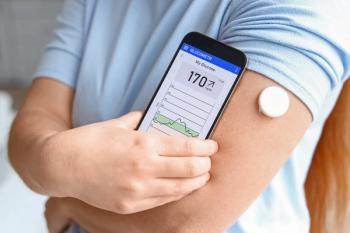
- September 2023
- Volume 89
- Issue 9
Self-Care Measures Can Help Prevent and Treat Headaches
Pharmacists can make clinical recommendations tailored to patients’ individual needs.
Literature indicates that headaches affect an estimated 90% to 99% of the global population at some point in their lives.1 Although there are many types of headaches, the most common types of headaches that are amenable to self-treatment when no contraindications are present include tension-type headaches (also known as stress headaches), diagnosed migraine, and sinus headaches.2
In general, headaches can be classified as follows2-5:
- primary headaches, which are not associated with an underlying illness, including episodic and chronic tension-type headaches, migraines with and without aura, and cluster headaches; and
- secondary headaches, which are symptomatic of an underlying condition such as head or neck trauma, stroke, substance abuse and withdrawal, viral and bacterial diseases (pharyngitis, sinusitis, and meningitis), disorders affecting the craniofacial structures, uncontrolled hypertension, dehydration, caffeine withdrawal, and analgesic overuse.
Migraine and tension-type headaches are believed to have lifetime incidences of 16% to 25% and 78% to 89%, respectively.1 Moreover, 80% to 90% of patients who seek medical care from their primary care provider (PCP) to evaluate headaches are diagnosed with a primary headache disorder.2,4,6
An estimated two-thirds of nonprescription analgesic use is for headache relief, and research reveals that an estimated 24% of users frequently overused analgesics, whereas only 14.5% were ever directed by their PCP to limit the use of treatment for acute headaches.2 Although many consumers elect to use the various nonprescription analgesics on the market, individuals experiencing severe and frequent headaches, especially those who have not received a medical evaluation from their PCP, should be encouraged to seek further medical evaluation to rule out any serious conditions.
The available nonprescription analgesics for self-treatment of headaches include acetaminophen and nonsteroidal anti-inflammatory drugs (NSAIDs), such as ibuprofen, naproxen, and salicylates (aspirin and magnesium salicylate). These analgesics are available in various formulations and dosages for both adult and pediatric patients. In March 2020, the FDA approved Advil Dual Action (GSK) as the first FDA-approved OTC combination of ibuprofen and acetaminophen in the United States.7
Many patients, particularly those with other comorbidities or those taking other medications, may find selecting the appropriate product challenging. Pharmacists are well positioned to make clinical recommendations tailored to patient needs, assist patients seeking guidance on the self-treatment of headaches, and evaluate patients to ascertain whether self-treatment is appropriate.
RECENT NEWS AND CLINICAL DATA
Findings from a study published in the Journal of General Internal Medicine involving an estimated 70,000 women revealed that frequent use of NSAIDs or acetaminophen was linked with an estimated 20% greater risk of tinnitus. Additionally, frequent use of moderate-dose aspirin was associated with a 16% higher risk among women younger than 60 years, but regular low-dose aspirin use did not increase the risk.8
“Even though these analgesics are widely available without a prescription, these are still medications, and there are potential [adverse] effects,” lead author Sharon Curhan, MD, ScM, of the Brigham and Women’s Hospital Channing Division of Network Medicine, said in a news release. “For anyone who is considering taking these types of medications regularly, it is advisable to consult with a health care professional to discuss the risks and benefits and to explore whether there are alternatives to using medication.”9
In a poster presentation at the recent American Headache Society Annual Scientific Meeting, investigators indicated that in a survey involving 8006 children and adolescents between ages 6 and 17 years who were diagnosed with anxiety, depression, or both, patients had a greater incidence of headache-related disability compared with individuals without these disorders.10 Results revealed that 45% of participants reported migraines and 24.4% reported probable migraine headache type.10
Another study published in Scientific Reports revealed that higher daily intake of dietary caffeine was correlated with an augmented incidence of severe headaches or migraine in adults, and especially in women, possibly due to hormonal factors.11 Results revealed that every 100 mg per day increase in dietary caffeine intake was associated with a 5% increase in the prevalence of severe headaches or migraine in all adults, and the incidence of severe headaches or migraine was 42% higher with a caffeine intake of 400 mg or more per day compared with an intake between 0 and less than 40 mg per day.11
In a recent article in Headache and Neurogenic Pain, researchers indicated that headache is a disabling condition in patients diagnosed with long COVID-19. Additionally, long COVID-19 appears to worsen the condition of those with headaches prior to contracting COVID-19.12
CONCLUSION
Although almost everyone gets a headache now and then, it is critical that pharmacists educate patients about the safe and proper use of OTC analgesics marketed for the treatment of headaches. Prior to making any recommendations, pharmacists should ascertain whether self-treatment is appropriate and should screen for possible contraindications, drug/drug interactions, and potential therapeutic duplications. Pharmacists can also identify pharmacological agents that may contribute to or exacerbate headaches and encourage patients to discuss any concerns with their PCP.
During counseling, patients should be advised to always read product labels carefully, especially when using multi-ingredient products, to avoid unnecessary drug use or therapeutic duplications. Some medications, including combination cough and cold and allergy medications, may also contain analgesics, and patients should be advised to adhere to recommended dosages and duration of use unless otherwise directed by their PCP.
Although most headaches can be managed easily and last only a few hours, patients should be encouraged to seek further medical attention if they do not obtain relief from self-treatment, if they are experiencing chronic headaches, if they are experiencing severe symptoms, if headaches are affecting sleep and overall day-to-day productivity and health-related quality of life, or if headaches increase in frequency or intensity.2 Patients should also be reminded that excessive use of analgesics may lead to rebound or medication overuse headaches.2
Pharmacists can also suggest various nonpharmacological measures that may diminish or thwart the incidence of headaches, such as taking breaks from electronic devices to prevent eye fatigue and strain, applying a cool cloth to the forehead, getting adequate sleep each night, exercising daily, managing stress, eating a balanced diet, staying hydrated, limiting the amount of caffeine intake, and practicing relaxation and destressing techniques. Patients should also be encouraged to maintain routine visits with their PCP and to obtain eye examinations at least annually or as directed.
Patients who experience frequent headaches can be encouraged to keep a headache diary, which may aid in identifying possible triggers for headaches and implementing strategies to avoid the triggers when feasible. Moreover, discussing this information with their PCP can be instrumental in diagnosing possible causes of the headaches and devising effective treatment and prevention strategies, including prescription medications when appropriate.
About the Author
Yvette C. Terrie, BSPHARM, RPH, is a consulting pharmacist and medical writer in Haymarket, Virginia.
References
- Olofsson IA, Hvedstrup J, Falkenberg K, et al. Pain sensitivity in men who have never experienced a headache: an observer blinded case-control study. J Headache Pain. 2021;22(1):134. doi:10.1186/s10194-021-01345-0
- Wilkinson J, Tromp K. Headache. In: Krinsky D, Berardi R, Ferreri S, et al, eds. Handbook of Nonprescription Drugs: An Interactive Approach to Self-Care. 19th ed. American Pharmacists Association; 2018.
- Mier RW, Dhadwal S. Primary Headaches. Dent Clin North Am. 2018;62(4):611-628. doi:10.1016/j.cden.2018.06.006
- Rizzoli P, Mullally WJ. Headache. Am J Med. 2018;131(1):17-24. doi:10.1016/j.amjmed.2017.09.005
- Headaches. Cleveland Clinic. Reviewed August 29, 2022. Accessed July 31, 2023. https://my.clevelandclinic.org/health/diseases/9639-headaches
- Red flags in headache—what if it isn’t migraine? American Headache Society. Accessed July 31, 2023. https://americanheadachesociety.org/news/red-flags-in-headache-what-if-it-isnt-migraine/
- FDA approves GSK’s Advil Dual Action with Acetaminophen for over-the-counter use in the United States. News release. GSK. March 2, 2020. Accessed July 31, 2023. https://www.gsk.com/en-gb/media/press-releases/fda-approves-gsk-s-advil-dual-action-with-acetaminophen-for-over-the-counter-use-in-the-united-states/
- Curhan SG, Glicksman J, Wang M, et al. Longitudinal study of analgesic use and risk of incident persistent tinnitus. J Gen Intern Med. 2022;37(14):3653-3662. doi:10.1007/s11606-021-07349-5
- Frequent use of over-the-counter analgesics associated with risk of tinnitus. Brigham and Women’s Hospital. February 9, 2022. Accessed July 31, 2023. https://www.brighamandwomens.org/about-bwh/newsroom/research-briefs-detail?id=4132
- Murphy C, Ladak A, Szperka C, et al. Anxiety, depression, and headache-related disability in a large pediatric cohort. Presented at: American Headache Society Annual Scientific Meeting. June 15-18, 2023; Austin, TX.
- Zhang L, Yin J, Li J, Sun H, Liu Y, Yang J. Association between dietary caffeine intake and severe headache or migraine in US adults. Sci Rep. 2023;13(10220). doi:10.1038/s41598-023-363225-8
- Rodrigues AN, Dias ARN, Paranhos ACM, et al. Headache in long COVID as a disabling condition: a clinical approach. Front Neurol. 2023;14:1149294. doi:10.3389/fneur.2023.1149294
Articles in this issue
about 2 years ago
Pharmacists Pet Peeves: September 2023about 2 years ago
Interactive Case Studies: September 2023about 2 years ago
Tenth Circuit Decision Invalidates Oklahoma PBM Rulesabout 2 years ago
It’s Time to Gear Up for Fall Vaccinesabout 2 years ago
Menopause Condition Watchabout 2 years ago
Case Studies: Influenzaabout 2 years ago
Raising Awareness About Suicidality, Self-Harm in Adolescentsabout 2 years ago
Generic Product News - September 2023about 2 years ago
September 2023: RX Product NewsNewsletter
Stay informed on drug updates, treatment guidelines, and pharmacy practice trends—subscribe to Pharmacy Times for weekly clinical insights.
















































































































































































































